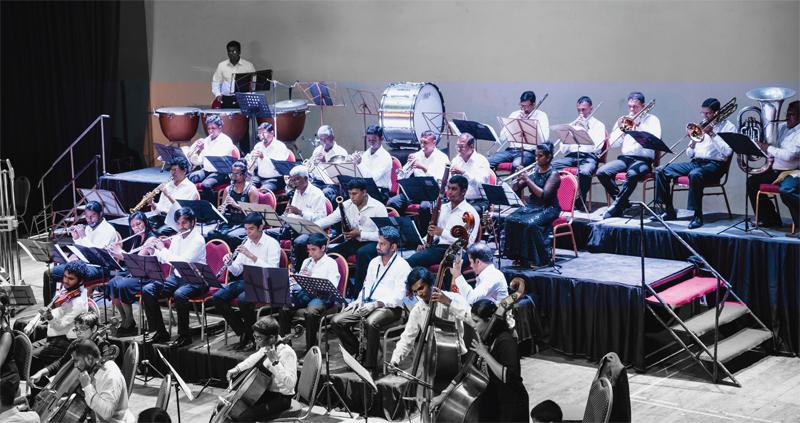
As most of you study music, we decided to have a look at the composition of an orchestra and its instruments. Srimal Weerasinghe, Chief Conductor of the Gustav Mahler Orchestra of Colombo takes you on this musical journey as part of the Gustav Mahler Society’s Educational Programme.
In earlier weeks, we discussed about the general composition of a modern Orchestra and the instruments of the String family. In general, ‘Wind Instruments’ produce sound by vibrating an air column. The method used for this process differs from instrument to instrument. There are two main types of Wind Instruments.
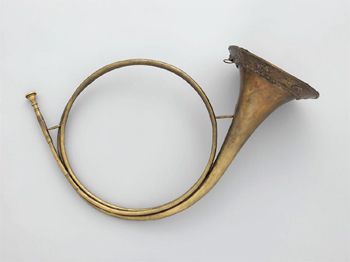 |
| Hunting horn |
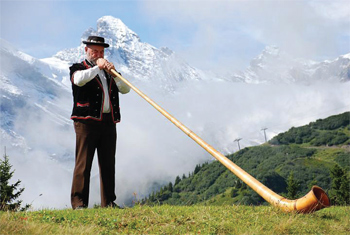 |
| Alpine horn |
1.Woodwind Instruments
2.Brasswind Instruments
The origins of wind instruments can be dated back to the pre-historic eras. There have been discoveries of primitive wind instruments being made using parts of animal bones.
As time went by these were gradually developed. Initially, these instruments had more of a communicative purpose over musical purposes. For example, horns were first used when hunting (Hunting horn) and signalling over large distances (Alpine Horn).
Later, these instruments were being used for religious music and folk music and later made their way into the Orchestra.
Most of these instruments underwent major developments over centuries to evolve into the instruments we see today in the Orchestra. Today, we are going to learn about the Woodwind Instruments.
The Woodwind Family
As said earlier, Woodwind Instruments produce their sound by vibrating an air column.
In the earlier days days all woodwind instruments were made using wood, hence their name. However, as the instruments evolved other material such as metal, and synthetic compounds were also used.
Tone production
There are two main methods used in woodwind instruments to generate vibrations.
1. Using a sharp edge to vibrate the air column
2. Using reeds to vibrate the air column (Single reeds or Double Reeds)
Recorder, Flute and Piccolo are instruments that use a sharp edge to create vibrations. For example; vibrations on the flute occur when the player directs the air stream across the edge of the hole on the lip plate, which generates and passes vibrations on to the air column inside the instrument.
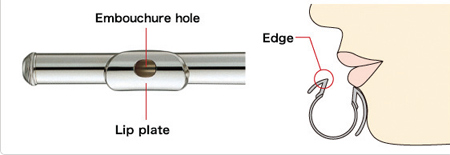 |
| Tone production on the Flute |
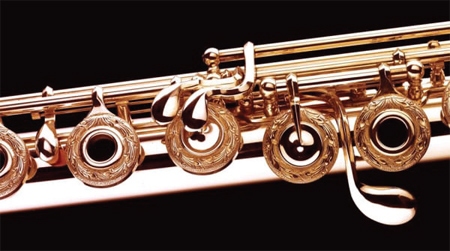 |
| Tone Holes |
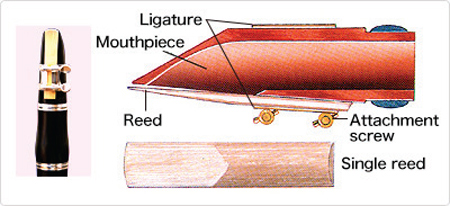 |
| Tone production on the Clarinet |
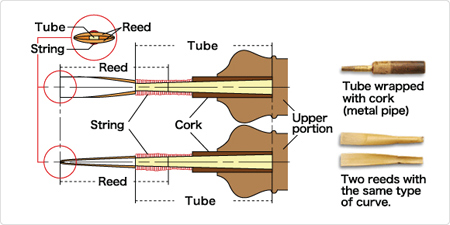 |
| Tone production on the Oboe |
Instruments like the Clarinet and Bass Clarinet use a single reed to generate vibrations. Reed is a thin piece of wood generally made of cane that is used in wind instruments. In this case, the single reed cannot produce a sound on its own so it is connected to a mouthpiece, that works together to generate vibrations and pass them on to the air column inside the instrument. Oboe and Bassoon are examples for Double Reed Instruments. In this method, two cane reeds are bound together with or without the use of a metal tube, and a mouthpiece is not used.
Vibrations occur when the player directs the air stream through the two reeds, and are passed on to the air column inside the instrument.
Most woodwind instruments have tone holes along the body of the instruments which are closed and opened by direct contact of player’s fingers or through the use of various key mechanisms. These tone holes enable the player to play different notes, by altering the length of the air column being vibrated.
When more holes are being covered the length of the air column is longer, therefore, the pitch gets lower and as lesser number of holes are being covered the length of the air column is shorter, therefore the pitch is higher. Use of harmonics also come into play when changing registers.
Transposing and Non-Transposing instruments?
First let’s look at Non-transposing instruments. Non-transposing instruments are instruments that produce exact notes notated for them.
The Oboe, Flute, Bassoon, Piano are non-transposing Instruments. A middle C played on all these instruments would sound the same in pitch. These instruments are said to be in Concert Pitch. A transposing instrument is an instrument that produces pitches different to the pitch indicated on written music. Piccolo, Clarinet in B flat, English Horn are some transposing instruments. For example, the piccolo produces notes which are one octave higher than music written for it. Note C on “Clarinet in B flat” is equal to B flat on a Piano (Concert pitch).
Note C played on the English Horn (in F) would be equal to F on a Piano (Concert pitch). Let’s learn about each woodwind instrument separately on the next article.
Srimal Weerasinghe Chief Conductor Gustav Mahler Orchestra of Colombo
